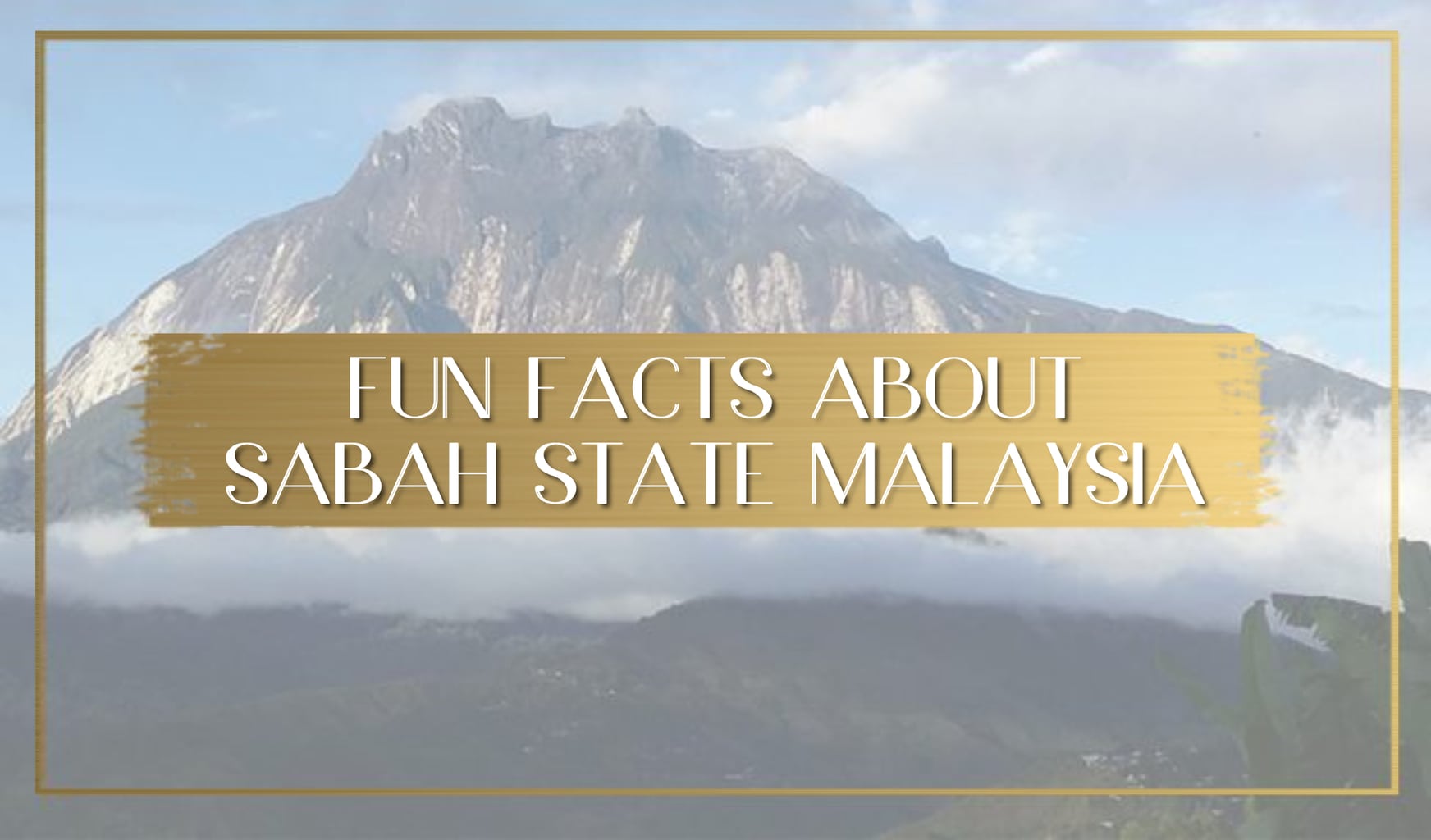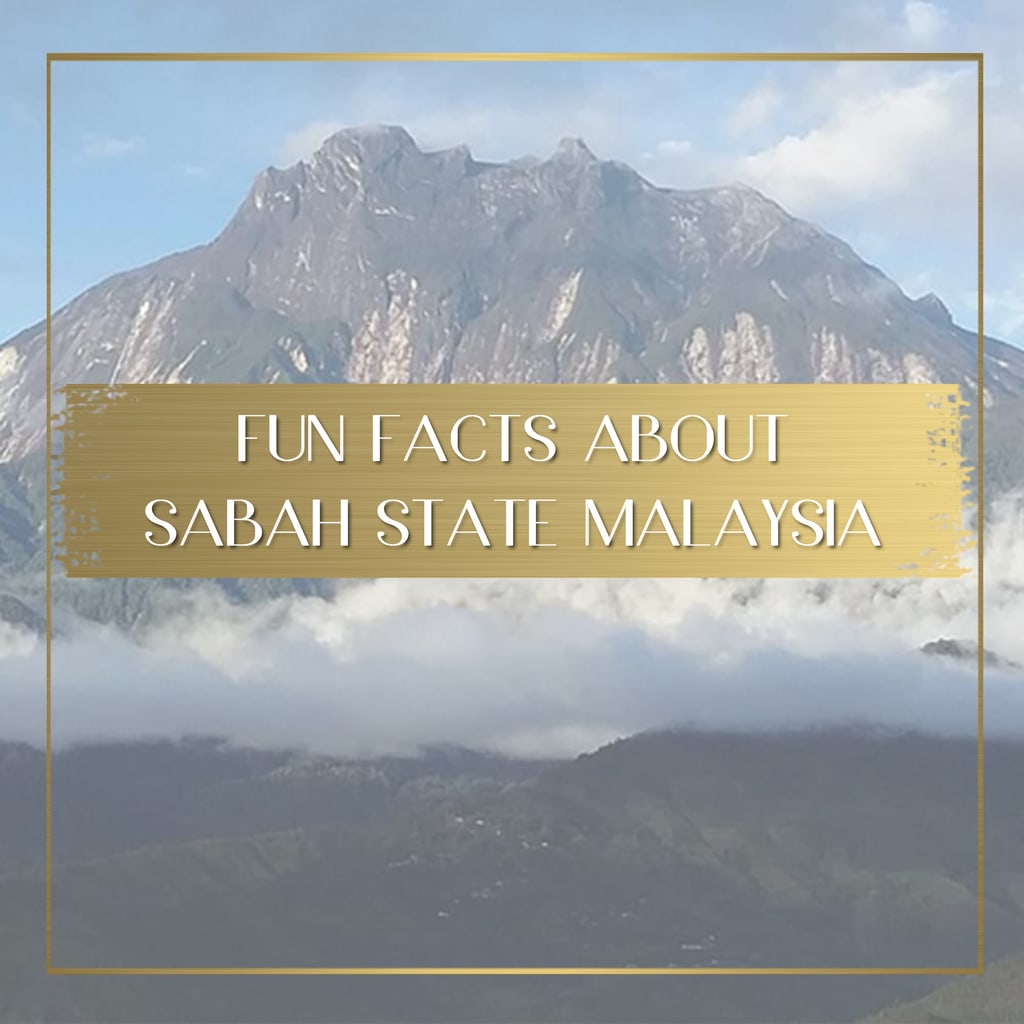
The geographical division of Borneo is sometimes confusing to understand. It is the third largest non-continental island in the world (after Greenland and New Guinea) and shares space with the nation of Brunei and Indonesia’s Kalimantan region. I have met many people on my travels who are still unsure if Borneo belongs to Malaysia, Indonesia or is its own country.
Let’s clear the air quickly.
The island itself is called Borneo and consists of the five Indonesia provinces that make up Kalimantan, the Islamic sultanate of Brunei and the northwest area of the island known as Malaysian Borneo or officially East Malaysia, which includes the constituents of Sabah and Sarawak (together making 26% of the population of Borneo). Each part of Borneo is therefore administered by different countries. So next time someone tells you they’re going to Borneo, you can show off your geographical skills by asking them to be more specific.
East Malaysia is divided into two states. The northern tip of Borneo is called Sabah (capital Kota Kinabalu or KK) and Sarawak (capital Kuching) covers the north-west area of the island.
And don’t forget to read our guide on 10 Essential Things Travelers Must Know Before Visiting Malaysia.
1. Malay or Chinese
It was reported in 2015 that Sabah’s population amounted to 3,5 million, making it the third most populous state in Malaysia with the highest non-citizen population. Although Borneo is surrounded by mainland Malaysia, Indonesia and the Philippines, the largest group of non-indigenous Sabahans is in fact ethnic Chinese, mostly of Hakka descent, who make up close to 10% of the population. So while Bahasa Malaysia (national language) and English are widely spoken, there are also a lot of Mandarin speakers in Borneo.
2. Land Beneath the Wind
Sabah is known as ‘Land Beneath the Wind’ because it is located 6ᵒ north of the equator, just below the tropical typhoon belt. It misses the devastating effects of the typhoons that frequently hit neighbouring Philippines. Being an equatorial country, Sabah experiences year-round summer of 22-33ᵒC for most areas, with Kinabalu Park being the exception, with temperatures dropping to as low as 2ᵒC up on the mountain. That also means that the coastal beauty is protected and the corals is better state than elsewhere. Diving in Sipadan also proves that.
3. It’s bananas
Moving on to the topic etymology, the name Sabah is actually taken from the abundance of the Pisang Sabaa tree on the west coast, where “pisang” means “banana” in Malay, Indonesian, and interestingly enough and unrelated, Afrikaans.
4. Who’s the boss?
When approaching a stranger, it is common to use the word “boss”. So when you are approached by someone you don’t know and they say “Hey boss, do you have the time?” don’t take it as a literal gesture! It is just a casual and friendly term for greeting.
5. The oldest
If you’d had to guess which rainforest was older would you say the Amazon or Borneo? If you guessed Borneo, you’d be correct! The Borneo Rainforest is in fact over 130 million years old. The tallest tropical tree in the world is located in Sabah in Tawau Hills Park. It is from the species called Shorea faguetiana (Yellow Meranti) and measures an astounding 88.1 meters.
6. The first
Sabah is also home to the world’s first Orangutan Rehabilitation Center in 1964 called Sepilok. There are currently around 25 young orphaned orangutans in the nurseries. As they are orphaned and cannot learn the skills they need to survive from their mothers, which usually takes about 6 years, they are paired up with other older apes in a buddy system.
7. The world’s largest flower
The Rafflesia is a big red flower with no leaves, roots, or stem. It is the biggest flower in the world, named after its founder, Sir Stamford Raffles who also discovered Singapore. The rafflesia is sought after by nature enthusiasts due to its rarity, despite its foul stench of rotting meat. The smell is emitted to attract flies for pollination. The most unique part of the Rafflesia is its growth cycle.
It starts as a spore and takes up to a year to grow before it becomes a ping pong ball sized bud. It then takes 9 months for the bud to grow and flower. The bloom only lasts for 4-5 days after which it dies out. All that work for just a short flowering cycle! For local farmers, it is considered very lucky if there is a rafflesia bloom on their property. It’s an additional source of income for them when tourists stop by their property to view this special bloom. Look out for signs on the main road!
8. 4th most expensive flower
The Gold of Kinabalu Orchid or Rothshild’s slipper Orchid is only found in a fenced off area at Kinabalu park. This orchid is rare and takes up to 15 years to bloom. It only grows at 500-1200m elevation and in volcanic soil, usually near a river. Very specific growth conditions, and the fact that it is on the brink of extinction has led to this beauty fetching a whopping SGD 6000!
9. Home to the world’s largest carnivorous plant
The Nepenthes Rajah is the largest carnivorous plant in the world. Its name translates to King of the Nepenthes plant group. The plant grows a cup filled with up to 3.5 litres of water and digestive fluid. It then waits for insects, ants and the occasional small lizard, bird or frog to fall into the cup and digests it for essential nutrients for it to grow.
Recent studies have shown that the large cup was evolved to create space for tree shrews to drink its nectar. In exchange, the defecation from the shrews provide a valuable source of Nitrogen for the plant.
10. Survivor original
I must confess that I don’t watch a lot of television, but I do remember almost 20 years ago when Survivor first aired. It showed out-of-the-ordinary places that I had never heard of and spurred inspiration for wanderlust. While the first season was called Survivor: Borneo, not many people know that it was shot in Pulau Tiga in the Kimanis Bay area off the western coast of Sabah. You can even stay on the island now as there is a resort there now.
11. Operation Cat Drop
The following fascinating story occurred mostly in Sarawak. In the early 1950s there was a malarial outbreak in the Sarawak area. Looking for a solution, the World Health Organisation (WHO) decided to spray large amounts of DDT (which is also said to have been dieldrin) over the area to wipe out the malaria-carrying mosquitoes. Although this killed the mosquitoes and the malaria rate sharply declined, it caused a series of negative events. First, the DDT unintentionally exterminated the parasitic wasp species that ate thatch-eating caterpillars and the roofs of people’s houses started caving in.
The DDT also poisoned the insects subsequently poisoning geckos which in turn poisoned the cats. As the cats died, rats started to increase threatening the Dayak people of the area with an outbreak of typhus and plague. The WHO then had to fix this problem which they in fact created. They decided the best way to quell the rat outbreak was to introduce more cats! How? Well, the Royal Air Force put 14,000 of the poor things in wooden boxes and dropped them out of plane with parachutes attached. This story is a lesson well-learned in the interconnectivity of living things and how some solutions can actually have a negative impact.
I was as skeptical as you might be about the truth to this story, so dug out some evidence. Apparently the WHO Library staff received a page from the R.A.F. Changi Operations Record book for March 1960 which had the comment, “Many thanks to R.A.F. and all responsible for airdrop arrangements; also to cat donors and cat basket makers. All cats safe. Very accurate dropping…” (Source).
12. The Maliau basin
The Maliau Basin is an interesting and gigantic forested hollow in Sabah that covers an area of 688 sqkm. It was first discovered in 1947 by a WWII pilot who was flying over Sabah but it was only really explored in 1988 with the first expedition. There are 19 waterfalls and a tea-coloured Maliau that is quite acidic and while not hospitable for fish, is home to many amphibians. There are over 80 species of orchids and over 82 other diverse species of animal including the elusive clouded leopard and over 9 species of the carnivorous Pitcher Plants. While it is virtually impossible to explore the entire Basin, you can go on a multi-day hike for an out of the ordinary adventure.
13. The World’s highest via ferrata
‘Via ferrata’ refers to a steel cable running along a route that is intermittently fixed to a rock. Often there are pegs, steps and ladders along the route for climbers. The via ferrata on Mount Kinabalu is 3776 meters tall, and takes 4-6 hours to complete. It is a steep descent of 365m over 1.2 km. If this is too daunting, they have a beginner’s track that begins at 3521m altitude. On the morning of the climb, you are required to reach the peak by 6.30am to be able to get to the via ferrata on time.
14. Extinct rhinos
There are no longer any wild Sumatran rhinoceroses in Sabah. There are however 3 in captivity that environmentalists have been trying to revive for the past few years. The 2 females are unable to bear young due to complications with their uteruses. Researchers are hoping to conduct in-vitro fertilisation, and if successful, the embryos will be implanted in rhino surrogate mothers in Sumatra Indonesia.
15. State with the most diversity
Sabah is home to 32 different indigenous ethnic groups that make up the 3 million population. It is Malaysia’s most diverse state. The main groups are Kadazandusun, Murut, Bajau and Rungus. Each of them have different traditions, some of which are still practiced today.
Most locals speak Malay, English and their local ethnic language. They swap between languages appropriately. Various festivals are also celebrated throughout the year: Kadazandusun Harvest Festival, Bajau Water Festival, Chinese New Year and Hari Raya Aidilfitri.
16. History of headhunters
The Murut tribe was the last of Sabah’s ethnic groups to give up headhunting. Collecting the heads of enemies were a sign of strength and were a warning sign to neighbouring villages. They were often displayed at the entrance of the village. A Murut man could not marry unless he presented a head to the girl’s family. Anti-headhunting legislation by the British together with conversion to Christianity or Islam led to the disappearance of this ancient tradition. Thank goodness for that!
